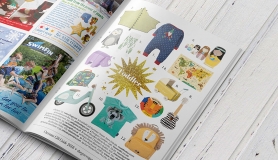More than fifty years ago, Japanese violinist, Shinichi Suzuki got really interested in how children learn. He noticed that societies the world over learned to speak their native language with ease. He began to apply the basic principles of language acquisition to the learning of music, and called his method the mother-tongue approach. Today it is called the Suzuki Method, which you may have heard of, as a practice for learning to play a musical instrument.
Suzuki based his approach on the belief that “Musical ability is not an inborn talent but an ability which can be developed. Any child who is properly trained can develop musical ability, just as all children learn to speak their mother tongue. The potential of every child is unlimited.”
His goal in creating the Suzuki method was not simply to develop professional musicians, but to nurture loving human beings and help develop each child’s character through the study of music.
Shinichi was one of twelve children and his father owned a violin factory. He used to play near the factory with his siblings and they watched instruments being made, but the children never realized what beautiful sounds could come from a violin. When he was seventeen, Shinichi heard a recording of Schubert’s Ave Maria, played by Mischa Elman. He was amazed that a violin could make such a beautiful tone because he had thought it was just a toy!
NURTURED BY LOVE
Suzuki brought a violin home from the factory and taught himself to play. He would listen to a recording and try to imitate what he heard.
He developed his theory that children could learn music just as they learned to speak - starting when they were very young and hearing music all around them. He believed that all children have the ability to learn if they are taught well by loving parents and teachers. At the time these ideas were quite radical. If children did play an instrument, they started learning when they were ten or eleven. Also, the understanding was that musical talent was special and rare. •
Dr. Suzuki’s young students learned to play very well and amazed audiences with their performances. It was unusual to see so many young children playing music so beautifully. At first audiences assumed the students were all musical geniuses. They did not understand Suzuki’s idea that all children can learn if they are taught in the right way.
For many years Dr. Suzuki continued to work on his teaching method. He chose music that would help children learn to play.
Over the years, more and more teachers and parents became interested in Suzuki’s ideas and began to teach using his method. Now there are thousands of children around the world who have learned to play instruments through the Suzuki Method.
Through his teaching, Dr. Suzuki showed teachers and parents everywhere what children could do. He also believed that hearing and playing great music helped children become good people with beautiful, peaceful hearts. Dr. Suzuki hoped that these children would help bring peace and understanding to the world.
How does the Suzuki method differ from other music education?
- Thoughtful teachers have often used some of the elements listed here, but Suzuki has formulated them in a cohesive approach. Some basic differences are:
- Suzuki teachers believe that musical ability can be developed in all children.
- Students begin at young ages.
- Parents play an active role in the learning process.
- Children become comfortable with the instrument before learning to read music.
- Technique is taught in the context of pieces rather than through dry technical exercises.
- Pieces are refined through constant review.
- Students perform frequently, individually and in groups.
7 KEY PRINCIPLES OF THE SUZUKI METHOD
Parent Involvement - In a similar way to the acquisition of language, parents are involved in the musical learning of their child. As a key tenet of the Suzuki method, parents attend lessons with the child and serve as “home teachers” during the week. A parent often learns to play before the child, so that they understand what the child is expected to do. Parents work with the teacher to create an enjoyable learning environment. Of course, parent could be any caregiver, guardian, grandparent, etc. who is supporting the child in the learning process.
When to get started - The early years are crucial for developing mental processes and muscle coordination. Listening to music should begin at birth; formal training may begin at age three or four, but it is never too late to begin.
Give encouragement - Each child learns at their own rate, building on small steps so that each one can be mastered. Children are also encouraged to support each other’s efforts, fostering an attitude of generosity and cooperation. In addition to private lessons, children participate in regular group lessons and performance at which they learn from and are motivated by each other.
Encouraging the ear - Children learn words after hearing them spoken hundreds of times by others. Listening to music every day is important, especially listening to pieces in the Suzuki repertoire so the child knows them immediately.
Repeat to build confidence - Constant repetition is essential in learning to play an instrument. Children do not learn a word or piece of music and then discard it. They add it to their vocabulary or repertoire, gradually using it in new and more sophisticated ways.
Natural learning - Children do not practice exercises to learn to talk, but use language for its natural purpose of communication and self-expression. Pieces in the Suzuki repertoire are designed to present technical problems to be learned in the context of the music rather than through dry technical exercises.
Delayed Reading - Children learn to read after their ability to talk has been well established. in the same way, children should develop basic technical competence on their instruments before being taught to read music.







